Items
keywords is exactly
medicine
-
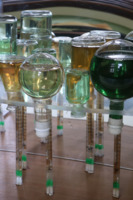
Forest
"The bottles and pipettes in 'Forest' were originally sourced from the storage rooms of the Chemistry department, where they awaited disposal. This cabinet responded to the lacuna of indigenous material represented by the chest and addressed this imbalance by filling the bottles with teas made from local medicinal plants. Staging the bottles and pipettes to simulate a forest references the prejudice of Burroughs, Wellcome and Co (BWC) against these natural remedies, ‘purifying’ them through laboratory processes before they were deemed trustworthy and marketable. This process also occluded the original source of the remedies and sowed the seeds of biopiracy. The various items of glassware in this cabinet were filled with a selection of infusions made from Balotta africana, Sutherlandia frutescens, Agathosma crenulata, Melianthus major, Mentha longifolia, Petroselinum crispum, Hypoxiz villosa and Salvia officinalis" (Liebenberg 2021: 255). -
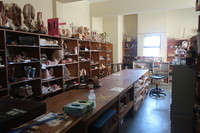
The workshop
"Held in the Department of Human Biology in the Division of Clinical Anatomy and Biological Anthropology, this collection consists of prepared specimens – both bottled and plastinated, anatomical models – and a skeletal repository used for research purposes. The materials are kept in three separate rooms, with the anatomical models in one, the prepared and plastinated specimens in another and the skeleton repository in its own room behind locked doors, viewable by appointment only. The room housing the anatomical models functioned as a workshop when modelmaking was still offered to first year medical students as an elective course: its walls are lined with shelves that display models made from materials ranging from papier-mâché to modern silicon copies and are taxonomised according to their anatomical representations, such as ‘the eye’, ‘head & neck’, ‘dentistry’, ‘embryology’, ‘lungs’ and ‘cardiovascular system’, to name a few. The models represent each anatomical section and are brightly coloured to differentiate the different parts of the human body and aid in identification. Many of the models can be dismantled into separate pieces and, like a puzzle, be reassembled into their original shapes. Interspersed with these models are rolled-up charts depicting organs, bodily systems and anatomical sections of the body in two-dimensional form, as well as old student modelling projects. A selection of animal skeletons is displayed on the far side of the room, and a shelf with a few anatomical specimens in formaldehyde is across from it" (Liebenberg 2021: 121 - 122). -
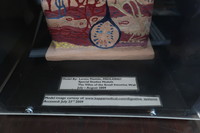
'Villus of the small intestine wall'
A student model of the ‘Villus of the small intestine wall’ found in the workshop of the Anatomy Building, UCT. -
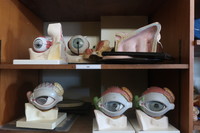
Seeing
Educational models found in the Anatomy workshop: "Borrowing from Herbert Read’s art historical discussion on looking, Digby posits that the biomedical practitioner’s generally critical attitudes were shaped in part by their limited recognition of indigenous medicine during this period – ‘what we see is inseparable from how we see; the eye is not innocent, and vision is partial’ (Digby 2006: 356) and, quoting Read, ‘we see what we learn to see, and vision becomes a habit, a convention, a partial selection of all there is to see’ (in Digby 2006: 356). Accordingly, Digby argues that the Western practitioners would have had, at best, only a partial view of the different medical systems in South Africa during this period (Digby 2006: 357) and probably only to the extent that it was a threat to their own livelihood and authority – as evidenced in the 1928 Medical, Dental and Pharmacy Act that Floyd helped instate" (Liebenberg 2021: 55). -

Tabloid medicine chest from Scott Polar Expedition
The expedition carried with them a Tabloid Medicine Chest. On the 11th of March, knowing that the party was unlikely to survive, Scott ordered Edward Wilson, the expedition’s Chief Scientist and a qualified doctor, to divide the painkillers between them so they could each end their life on their own terms. Writing in his diary on that day, Scott states, “I practically ordered Wilson to hand over the means of ending our troubles to us, so that anyone of us may know how to do so". Scott, Bowers and Oates had thirty opium tabloids apiece and Wilson, the morphine. Scotts diary entry on either the 22nd or 23rd of March showed that they had a change of heart however: “no fuel and only one or two left of food — must be near the end. Have decided that it shall be natural — we shall march for the depot with or without our effects and die in our tracks". -

BC666
A page of the Tabloid guide. -
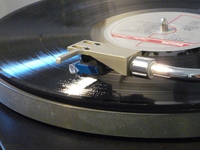
Mozart's Antimony
Medical bedside cabinet, gramophone player with a hypodermic needle substitution, Mozart’s Sonata in C, KV 279 and Sonata in D, KV 576. The needle is slowly scratching irreparable grooves into the record whilst the record in return, is making the needle blunt.. "On 20 October 1791, Mozart told his wife Constanza that he was being poisoned. On 20 November he developed a fever; his hands, feet and stomach became swollen, and he had attacks of vomiting. He died on the 5th of December. Although Antonio Salieri confessed to Mozart’s murder several years later, it is highly unlikely as Salieri suffered from senile dementia. In 1991, Ian James of London’s Royal Free Hospital attributed Mozart’s death to antimony, a poison that Mozart may have been given by his doctor - not to kill him but to cure him. Antimony was prescribed for what was then diagnosed as melancholia. In small doses it leads to headaches, fainting and depression. In large doses it can be fatal within days (Emsley 1999: 225). In the autumn of 1791, Mozart, suffering from severe depression, exacerbated by debt, the ill reception of his new work La Clemenza di Tito, and a commission to write a requiem which he believed was for his own funeral, dosed himself with a variety of medicines – one of these being antimony – and what was meant to cure, killed" (Liebenberg 2011: 85 - 91). -
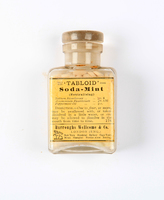
Soda-Mint (Neutralising)
"Antacid, exhilarant and stimulant. From one to three as a neutralising agent, in irritable and acid conditions of the stomach, dyspepsia, flatulence, etc. They may be swallowed with water, or be powdered and dissolved in water and taken as a draught" (BWC 1925:138). -
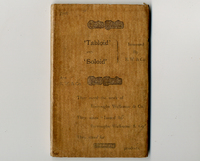
'Tabloid' A Brief Medical Guide (Back cover)
A guide to illnesses common to tropical regions and how to cure them using Burroughs Wellcome & Co.'s products -

'Tabloid' A Brief Medical Guide (End pages)
A guide to illnesses common to tropical regions and how to cure them using Burroughs Wellcome & Co.'s products -

'Tabloid' A Brief Medical Guide (p148)
A guide to illnesses common to tropical regions and how to cure them using Burroughs Wellcome & Co.'s products -

'Tabloid' A Brief Medical Guide (p146,147)
A guide to illnesses common to tropical regions and how to cure them using Burroughs Wellcome & Co.'s products -
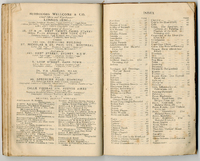
'Tabloid' A Brief Medical Guide (p144,145)
A guide to illnesses common to tropical regions and how to cure them using Burroughs Wellcome & Co.'s products -
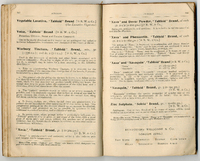
'Tabloid' A Brief Medical Guide (p142,143)
A guide to illnesses common to tropical regions and how to cure them using Burroughs Wellcome & Co.'s products -

'Tabloid' A Brief Medical Guide (p140,141)
A guide to illnesses common to tropical regions and how to cure them using Burroughs Wellcome & Co.'s products -

'Tabloid' A Brief Medical Guide (p138,139)
A guide to illnesses common to tropical regions and how to cure them using Burroughs Wellcome & Co.'s products -

'Tabloid' A Brief Medical Guide (p136,137)
A guide to illnesses common to tropical regions and how to cure them using Burroughs Wellcome & Co.'s products -

'Tabloid' A Brief Medical Guide (p134,135)
A guide to illnesses common to tropical regions and how to cure them using Burroughs Wellcome & Co.'s products -

'Tabloid' A Brief Medical Guide (p132,133)
A guide to illnesses common to tropical regions and how to cure them using Burroughs Wellcome & Co.'s products -

'Tabloid' A Brief Medical Guide (p130,131)
A guide to illnesses common to tropical regions and how to cure them using Burroughs Wellcome & Co.'s products -

'Tabloid' A Brief Medical Guide (p128,129)
A guide to illnesses common to tropical regions and how to cure them using Burroughs Wellcome & Co.'s products -

'Tabloid' A Brief Medical Guide (p126,127)
A guide to illnesses common to tropical regions and how to cure them using Burroughs Wellcome & Co.'s products -

'Tabloid' A Brief Medical Guide (p124,125)
A guide to illnesses common to tropical regions and how to cure them using Burroughs Wellcome & Co.'s products -

'Tabloid' A Brief Medical Guide (p122,123)
A guide to illnesses common to tropical regions and how to cure them using Burroughs Wellcome & Co.'s products -

'Tabloid' A Brief Medical Guide (p120,121)
A guide to illnesses common to tropical regions and how to cure them using Burroughs Wellcome & Co.'s products -

'Tabloid' A Brief Medical Guide (p118,119)
A guide to illnesses common to tropical regions and how to cure them using Burroughs Wellcome & Co.'s products -
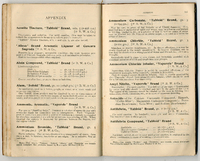
'Tabloid' A Brief Medical Guide (p116,117)
A guide to illnesses common to tropical regions and how to cure them using Burroughs Wellcome & Co.'s products -
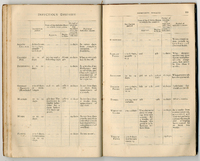
'Tabloid' A Brief Medical Guide (p114,115)
A guide to illnesses common to tropical regions and how to cure them using Burroughs Wellcome & Co.'s products -
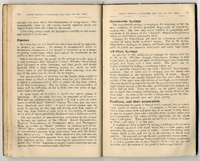
'Tabloid' A Brief Medical Guide (p112,113)
A guide to illnesses common to tropical regions and how to cure them using Burroughs Wellcome & Co.'s products -
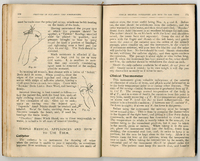
'Tabloid' A Brief Medical Guide (p110,111)
A guide to illnesses common to tropical regions and how to cure them using Burroughs Wellcome & Co.'s products -

'Tabloid' A Brief Medical Guide (p108,109)
A guide to illnesses common to tropical regions and how to cure them using Burroughs Wellcome & Co.'s products -
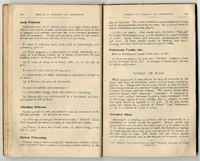
'Tabloid' A Brief Medical Guide (p106,107)
A guide to illnesses common to tropical regions and how to cure them using Burroughs Wellcome & Co.'s products -

'Tabloid' A Brief Medical Guide (p104,105)
A guide to illnesses common to tropical regions and how to cure them using Burroughs Wellcome & Co.'s products -

'Tabloid' A Brief Medical Guide (p102,103)
A guide to illnesses common to tropical regions and how to cure them using Burroughs Wellcome & Co.'s products -

'Tabloid' A Brief Medical Guide (p100,101)
A guide to illnesses common to tropical regions and how to cure them using Burroughs Wellcome & Co.'s products -

'Tabloid' A Brief Medical Guide (p98,99)
A guide to illnesses common to tropical regions and how to cure them using Burroughs Wellcome & Co.'s products -

'Tabloid' A Brief Medical Guide (p96,97)
A guide to illnesses common to tropical regions and how to cure them using Burroughs Wellcome & Co.'s products -

'Tabloid' A Brief Medical Guide (p94,95)
A guide to illnesses common to tropical regions and how to cure them using Burroughs Wellcome & Co.'s products -

'Tabloid' A Brief Medical Guide (p92,93)
A guide to illnesses common to tropical regions and how to cure them using Burroughs Wellcome & Co.'s products -

'Tabloid' A Brief Medical Guide (p90,91)
A guide to illnesses common to tropical regions and how to cure them using Burroughs Wellcome & Co.'s products -

'Tabloid' A Brief Medical Guide (p88,89)
A guide to illnesses common to tropical regions and how to cure them using Burroughs Wellcome & Co.'s products -

'Tabloid' A Brief Medical Guide (p86,87)
A guide to illnesses common to tropical regions and how to cure them using Burroughs Wellcome & Co.'s products -
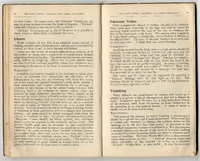
'Tabloid' A Brief Medical Guide (p84,85)
A guide to illnesses common to tropical regions and how to cure them using Burroughs Wellcome & Co.'s products -

'Tabloid' A Brief Medical Guide (p82,83)
A guide to illnesses common to tropical regions and how to cure them using Burroughs Wellcome & Co.'s products -
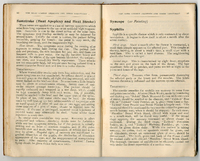
'Tabloid' A Brief Medical Guide (p80,81)
A guide to illnesses common to tropical regions and how to cure them using Burroughs Wellcome & Co.'s products -
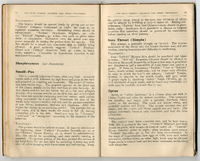
'Tabloid' A Brief Medical Guide (p78,79)
A guide to illnesses common to tropical regions and how to cure them using Burroughs Wellcome & Co.'s products -

'Tabloid' A Brief Medical Guide (p76,77)
A guide to illnesses common to tropical regions and how to cure them using Burroughs Wellcome & Co.'s products -
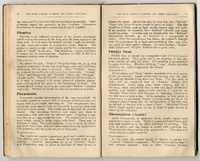
'Tabloid' A Brief Medical Guide (p74,75)
A guide to illnesses common to tropical regions and how to cure them using Burroughs Wellcome & Co.'s products -

'Tabloid' A Brief Medical Guide (p72,73)
A guide to illnesses common to tropical regions and how to cure them using Burroughs Wellcome & Co.'s products -

'Tabloid' A Brief Medical Guide (p70,71)
A guide to illnesses common to tropical regions and how to cure them using Burroughs Wellcome & Co.'s products


